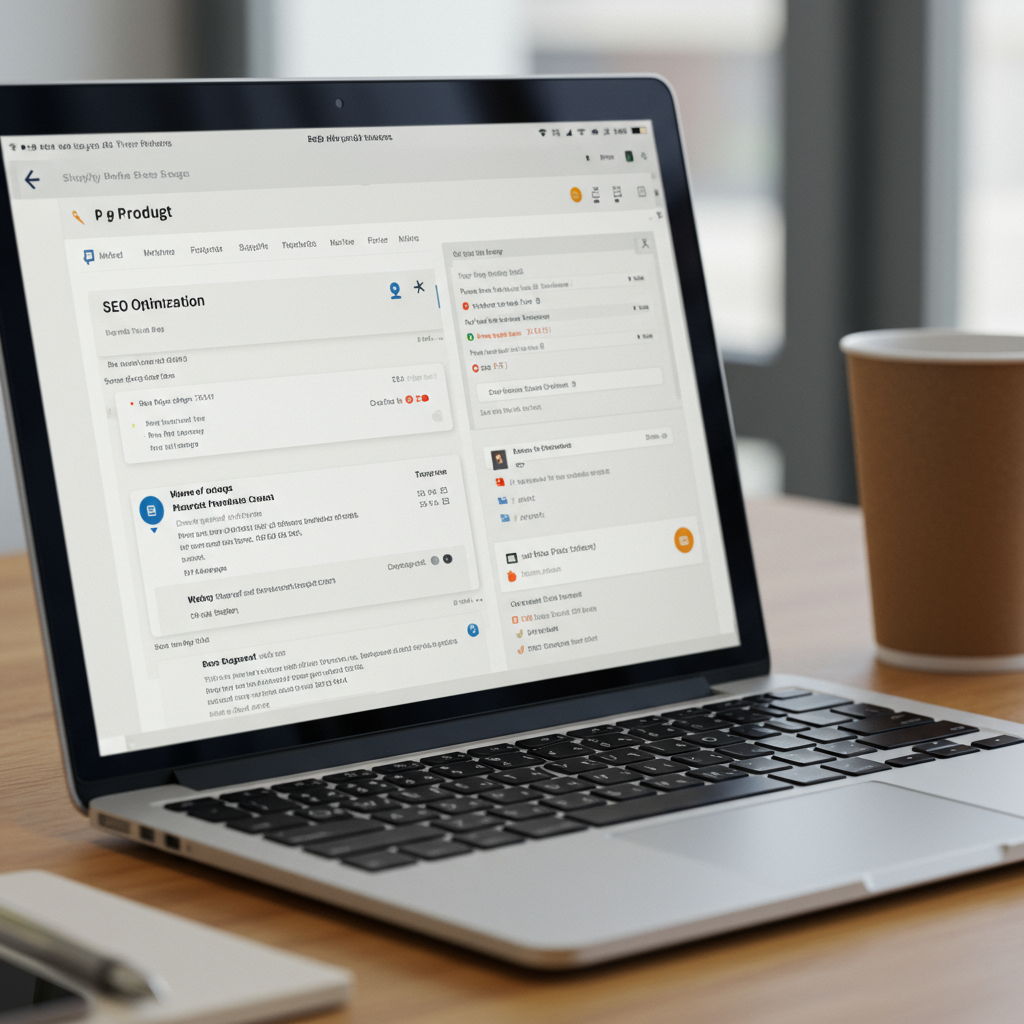Unlock higher rankings and boost sales by optimizing your Shopify product pages for search engines.
Welcome, fellow Shopify merchants! Today, I want to talk about something incredibly vital for your online store’s success: optimizing your product pages for search engines. It’s not just about having great products; it’s about making sure potential customers can actually find them amidst the vast digital landscape.
Think of your product pages as your digital storefronts. If they’re hidden away in a back alley of the internet, even the most amazing products won’t sell. SEO ensures your storefront is on the busiest street, visible to everyone searching for exactly what you offer.
While Shopify provides excellent built-in SEO features, simply filling in the meta title and description fields isn’t enough to truly dominate search results. We need to go deeper, leveraging every opportunity to signal relevance and authority to Google and other search engines.
The foundation of any successful SEO strategy begins with thorough keyword research. For product pages, this means identifying the exact terms your target customers are typing into search engines when looking for products like yours.
I recommend using tools like Google Keyword Planner, Ahrefs, Semrush, or even just Google’s autocomplete suggestions and ‘People also ask’ sections. Look for keywords that are highly relevant, have decent search volume, and aren’t overly competitive.
Don’t forget about long-tail keywords. These are longer, more specific phrases (e.g., “organic cotton baby onesie 0-3 months”). While they have lower search volume, they often indicate higher purchase intent and are easier to rank for.
Take a look at what keywords your successful competitors are ranking for. This can give you valuable insights into terms you might have overlooked and help you identify gaps in your own strategy, potentially uncovering new opportunities.
Your product title, which typically appears as the H1 heading on your page, is incredibly important. It should be clear, descriptive, and include your primary target keyword naturally, making it immediately obvious what the product is.
The meta title is what appears in the browser tab and as the clickable headline in search results. Keep it concise (around 50-60 characters), include your main keyword, and make it enticing enough to encourage clicks from searchers.
The meta description is the short snippet of text under your meta title in search results. While not a direct ranking factor, a well-written, keyword-rich description can significantly improve your click-through rate (CTR) by compelling users to visit your page.
This is where you can truly shine. Your product description should be unique, detailed, and persuasive. Don’t just list features; highlight benefits, solve customer pain points, and tell a story about how the product will improve their lives.
Naturally weave your target keywords and related terms throughout your product description. Avoid keyword stuffing, as this can harm your rankings and readability. Focus on providing value and comprehensive information to the customer.
Break up your description with subheadings (H2, H3) and bullet points. This improves readability for both users and search engines, making it easier to digest information and quickly identify key details and selling points.
Images are crucial for e-commerce, but they can also slow down your site if not optimized. Compress your images without sacrificing quality, and use descriptive, keyword-rich file names (e.g., `red-leather-handbag.jpg` instead of `IMG_001.jpg`).
Every image on your product page needs descriptive alt text. This helps search engines understand what the image is about and improves accessibility for visually impaired users. Include keywords where relevant and natural, describing the image accurately.
Shopify automatically generates URLs, but you can edit them. Aim for short, clean, and keyword-rich URLs (e.g., `yourstore.com/products/organic-baby-onesie`). Avoid long strings of numbers or irrelevant characters that confuse both users and search engines.
Link to your product pages from relevant blog posts, category pages, and even other product pages. This helps distribute “link juice” throughout your site and signals to search engines the importance and relevance of your product pages.
User-generated content like product reviews is gold for SEO. They provide fresh, unique content, often contain natural language keywords, and build trust and social proof. Actively encourage your customers to leave detailed reviews.
Shopify often handles basic product schema automatically, but it’s worth checking. Schema markup helps search engines understand specific details about your product, like price, availability, and ratings, leading to rich snippets in search results.
A slow-loading product page will frustrate users and negatively impact your search rankings. Optimize images, minimize app usage, and consider a fast-loading theme to ensure your pages load quickly and provide a seamless user experience.
With the majority of online shopping happening on mobile devices, ensuring your product pages are perfectly responsive is non-negotiable. Google prioritizes mobile-first indexing, so a great mobile experience is absolutely key for ranking success.
SEO is an ongoing process. Regularly check your Google Analytics and Google Search Console accounts. Monitor traffic to your product pages, keyword rankings, and conversion rates to understand your performance.
Use the data you collect to identify what’s working and what isn’t. Are certain keywords bringing in traffic but not converting? Perhaps your product description needs refinement. Are pages loading slowly? Address those technical issues promptly.
What do you think about this article? I’ve shared a lot of strategies here, and I’m curious to hear your thoughts. Do you have any go-to Shopify SEO tips that I might have missed, or specific challenges you’ve faced in optimizing your product pages?
By diligently applying these SEO strategies to your Shopify product pages, you’ll not only improve your visibility in search results but also enhance the overall user experience, ultimately leading to more traffic, higher engagement, and increased sales.
Remember, SEO is a marathon, not a sprint. Consistent effort and a commitment to providing value will yield the best long-term results for your Shopify store. Good luck, and happy optimizing!






